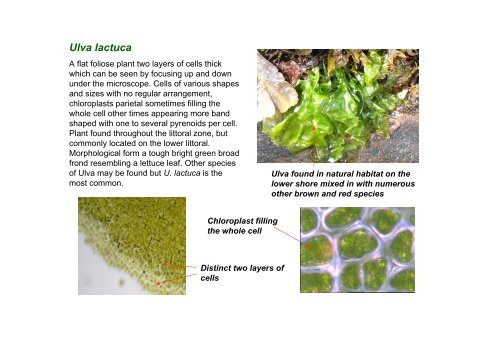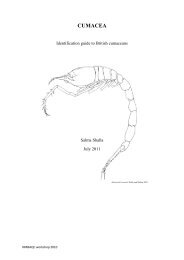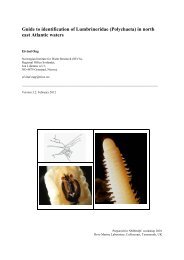s A Field Guide to the British Seaweeds - NMBAQC
s A Field Guide to the British Seaweeds - NMBAQC
s A Field Guide to the British Seaweeds - NMBAQC
You also want an ePaper? Increase the reach of your titles
YUMPU automatically turns print PDFs into web optimized ePapers that Google loves.
Ulva lactuca<br />
A flat foliose plant two layers of cells thick<br />
which can be seen by focusing up and down<br />
under <strong>the</strong> microscope. Cells of various shapes<br />
and sizes with no regular arrangement,<br />
chloroplasts parietal sometimes filling <strong>the</strong><br />
whole cell o<strong>the</strong>r times appearing more band<br />
shaped with one <strong>to</strong> several pyrenoids per cell.<br />
Plant found throughout <strong>the</strong> lit<strong>to</strong>ral zone, but<br />
commonly located on <strong>the</strong> lower lit<strong>to</strong>ral.<br />
Morphological form a <strong>to</strong>ugh bright green broad<br />
frond resembling a lettuce leaf. O<strong>the</strong>r species<br />
of Ulva may be found but U. lactuca is <strong>the</strong><br />
most common.<br />
Chloroplast filling<br />
<strong>the</strong> whole cell<br />
Distinct two layers of<br />
cells<br />
Ulva found in natural habitat on <strong>the</strong><br />
lower shore mixed in with numerous<br />
o<strong>the</strong>r brown and red species




